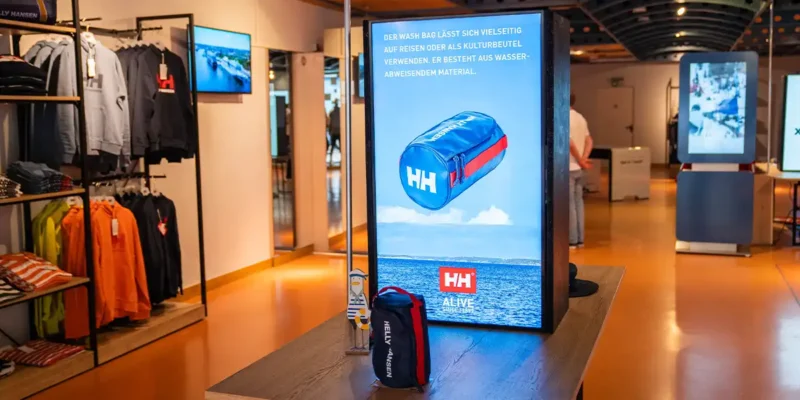Here’s How to Use Sony BRAVIA Displays to Create Virtual Windows

Mitch Braff, founder and CEO of LiquidView, is using Sony’s professional BRAVIA displays to transform blank walls into virtual windows, offering immersive views that replicate the feeling of looking outside.
Braff, whose background includes filmmaking and corporate communications, was inspired to launch LiquidView after visiting a client with spectacular views from the front and back of the house, but a dining room that faced a neighbor’s wall. He wondered: Could digital windows replace undesirable views with serene landscapes? The concept evolved into a growing business, building on his earlier experience supporting high-end video art installations through a previous venture, Liquid Canvas.
LiquidView’s Digital Windows are now being installed across a variety of environments, including residences, assisted living centers, healthcare and wellness facilities, and schools in underserved communities.
Having worked with Sony displays during his time at Liquid Canvas, Braff saw the company’s BRAVIA technology as a natural fit for LiquidView. The solution uses Sony’s 4K HDR professional displays — including the BZ40L series, which features Deep Black Non-Glare technology — to present high-resolution, immersive visuals that turn interior walls into simulated windows.
The BZ40L series is available in 55-, 65-, 75- and 85-inch sizes. The displays combine vibrant image quality with broad compatibility, flexible installation options, and low-reflection surfaces that preserve deep blacks and high contrast, even in bright rooms.
“I love the quality of Sony’s camera technology, and from my perspective, Sony makes the best displays out there,” Braff said. “The quality between the cameras and displays is consistent.”
He also noted Sony’s HDR and HDR10 capabilities, saying they “proved to be true HDR and superior to other displays” during the product specification process. The HDR settings can be copied between displays using a USB drive, simplifying installations for LiquidView’s partners. “The displays are built like tanks,” Braff added. “You can set them and forget them.”
LiquidView offers recessed “InWall” and mounted “OnWall” display options, with a variety of trims, screen orientations, and content configurations to match users’ aesthetics and existing window layouts. For added realism, the displays can be outfitted with tempered glass to mimic the subtle reflections of real windows — enhancing the brain’s perception of depth and authenticity.
The content, filmed using Sony’s VENICE 2 full-frame digital cinema camera in 8K, is captured during multi-day shoots and edited into seamless 24-hour loops with detailed color correction and stereo sound design. With up to 60TB of raw footage per location, the high-quality content is stored locally on a media player and synchronized to the time of day and geographic location of the display using LiquidView’s patented software. This enables each installation to reflect real-time sunrise, sunset, and lighting changes — supporting circadian rhythms and improving user wellness.

According to a study from Stanford University, exposure to LiquidView’s digital windows produced measurable changes in participants’ emotional and physiological states. Dr. Jamie Zeitzer, professor of psychiatry and behavioral sciences and one of the study’s lead researchers, said, “The initial results suggest that exposure to LiquidView Digital Windows improves mental health and well-being.”
For Braff’s team, display reliability is essential. “These windows run large volumes of content all day long,” said Bill Hofmann, CTO of LiquidView. “Sony remains committed to both the professional and consumer markets, and its professional displays offer 24/7 support — which was a critical factor for us. Remote manageability is also very important.”
Sony’s five-year warranty and Advanced Replacement Program were additional factors in the company’s decision. “That’s a really big deal,” Braff said. “It made everyone feel comfortable and safe knowing Sony will stand behind the product for five years.”
The displays’ processing power also plays a role. “The level of detail is amazing,” Braff said. “For example, in footage of a beach in Nice, you can see the exact sunglasses people are wearing and the design on their bathing suits. The quality is that good.”
One standout installation involved The Inspired Community Project (TICP), a nonprofit in the Bronx serving neurodivergent children — particularly from underserved Black, Latinx and low-income communities. When TICP sought to build a new space inside a former windowless drugstore, they discovered LiquidView on Instagram and saw an opportunity to bring natural scenes into each classroom.
“We were able to transform TICP’s windowless school into a stimulating space with calming sounds and visuals — like being by the ocean,” Braff said. “This allowed them to lease a more affordable windowless property and still experience the benefits of a space with views.”
Jill Moses, founder and CEO of TICP, said the windows have been a powerful tool for the children. “These immersive visuals help us transform our therapy spaces into calming, engaging environments that promote emotional regulation and reduce sensory overload,” she said. “Our kids may not have access to safe, scenic spaces outside of our center, so this visual connection to the natural world is more than just aesthetic — it’s therapeutic.”
As LiquidView grows, the company continues to rely on its relationship with Sony to adapt to evolving needs. “Sony’s support — from pre-sales to technical assistance — has been critical in refining our product,” Hofmann said. Braff added, “With the APIs available, we can keep improving the experience over time, including instant remote support and streamlined color adjustments.”




